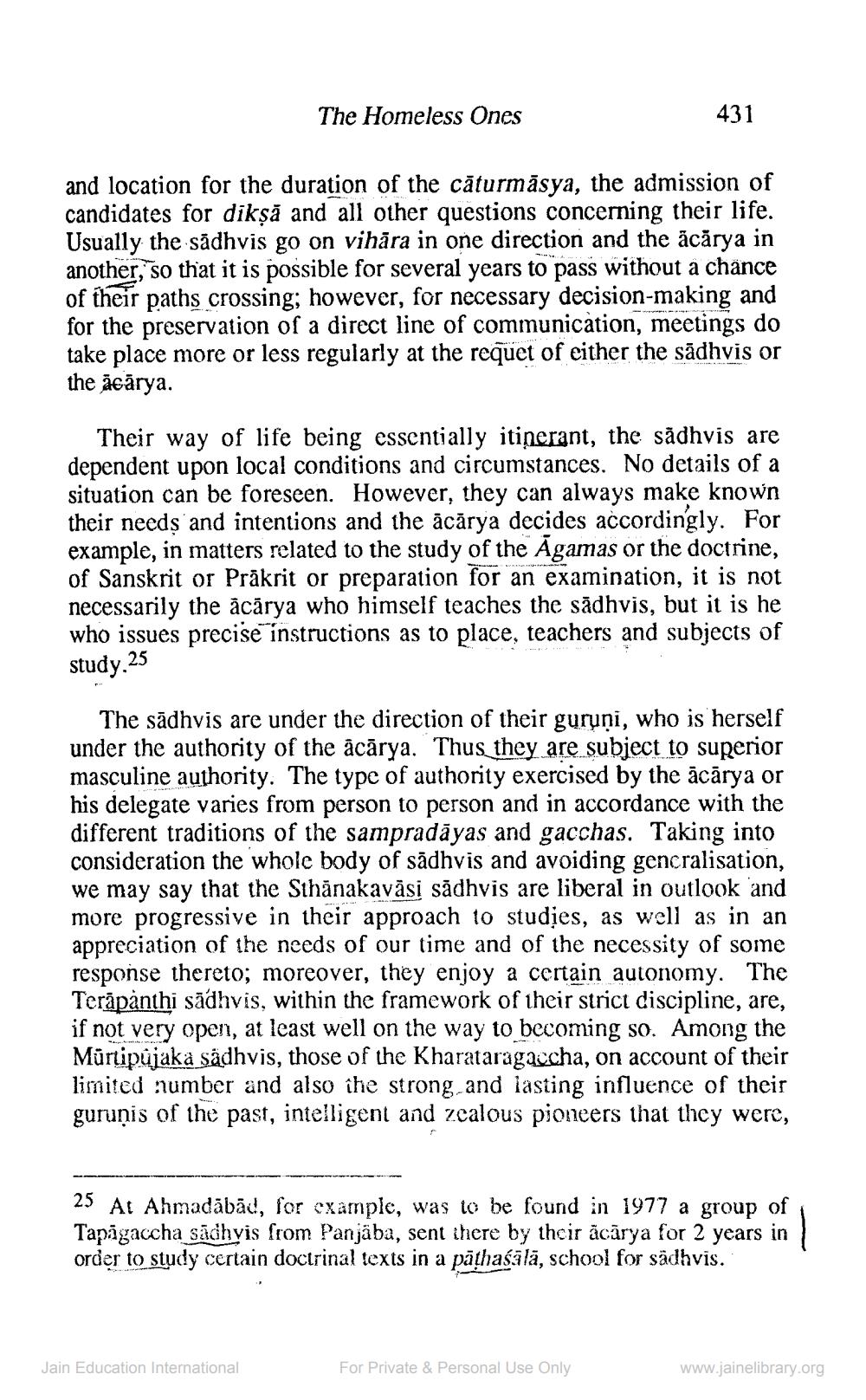________________
The Homeless Ones
and location for the duration of the caturmasya, the admission of candidates for dikṣā and all other questions concerning their life. Usually the sadhvis go on vihara in one direction and the ăcărya in another, so that it is possible for several years to pass without a chance of their paths crossing; however, for necessary decision-making and for the preservation of a direct line of communication, meetings do take place more or less regularly at the requet of either the sadhvis or the ācārya.
431
Their way of life being essentially itinerant, the sädhvis are dependent upon local conditions and circumstances. No details of a situation can be foreseen. However, they can always make known their needs and intentions and the acarya decides accordingly. For example, in matters related to the study of the Agamas or the doctrine, of Sanskrit or Prakrit or preparation for an examination, is not necessarily the acarya who himself teaches the sadhvis, but is he who issues precise instructions as to place, teachers and subjects of study 25
The sadhvis are under the direction of their guruni, who is herself under the authority of the ācārya. Thus they are subject to superior masculine authority. The type of authority exercised by the ācārya or his delegate varies from person to person and in accordance with the different traditions of the sampradāyas and gacchas. Taking into consideration the whole body of sadhvis and avoiding gencralisation, we may say that the Sthanakavāsi sadhvis are liberal in outlook and more progressive in their approach to studies, as well as in an appreciation of the needs of our time and of the necessity of some response thereto; moreover, they enjoy a certain autonomy. The Terapanthi sadhvis, within the framework of their strict discipline, are, if not very open, at least well on the way to becoming so. Among the Mürtipujaka sädhvis, those of the Kharataragaccha, on account of their limited number and also the strong and lasting influence of their gurunis of the past, intelligent and zealous pioneers that they were,
Jain Education International
25
At Ahmadābād, for example, was to be found in 1977 a group of Tapagaccha sadhvis from Panjaba, sent there by their ācārya for 2 years in order to study certain doctrinal texts in a pāṭhaśālā, school for sädhvis.
For Private & Personal Use Only
www.jainelibrary.org




